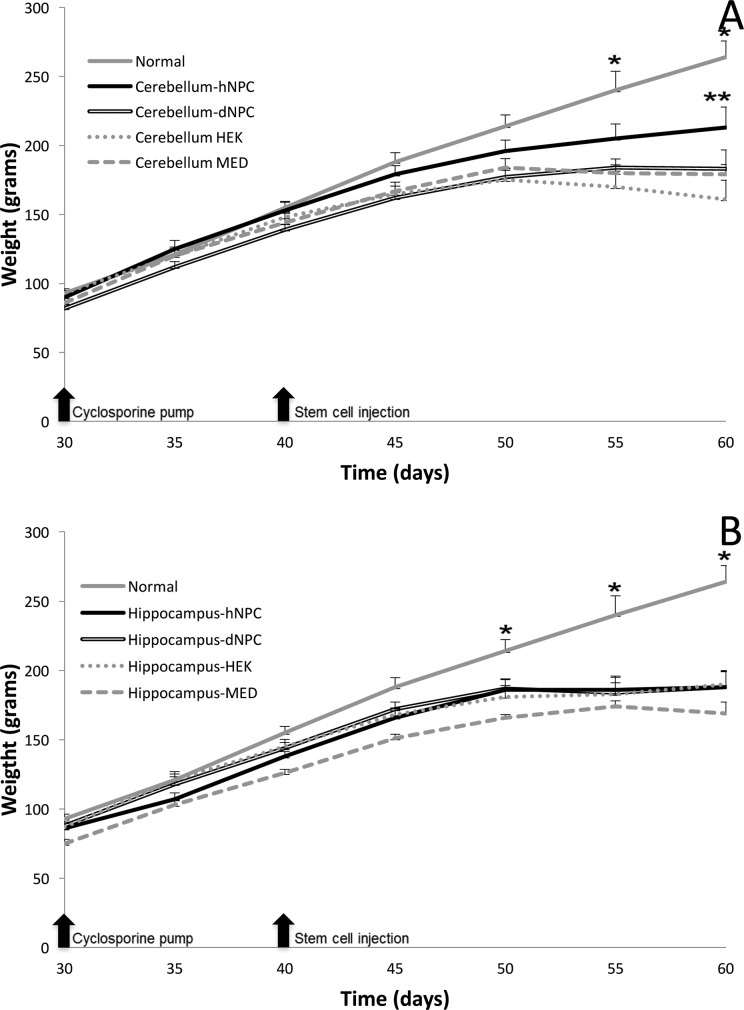Figure 1.
Mean weight gain for mutant spastic Han-Wistar (sHW) rats bilaterally injected into either the cerebellum (A) or hippocampus (B) with human neural progenitor cells (hNPCs; cerebellum, n = 12; and hippocampus, n = 12), dead NPCs (dNPCs; n = 12), human embryonic kidney (HEK) cells (n = 8), or culture media (MED; n = 8). Additionally, untreated, normal HW rats (n = 9) were utilized as a positive weight gain control. (A) Untreated normal HW rats compared to the cerebellar hNPC group displayed statistically significant (F = 163.27, *P < 0.05) weight gain starting at 55 d. The bilateral injections of live hNPCs into the cerebellum elicited a statistically significant (Tukey’s, **P < 0.05) increase in weight gain in the sHW rats when compared to sHW rats injected with nonviable dNPCs. (B) Similar to the untreated normal versus cerebellar hNPC groups, the untreated normal group displayed increased weight gain when measured against hippocampal hNPC injections starting at 50 d (F = 89.83, *P < 0.05). The bilateral injections of live hNPCs into the hippocampus did not elicit a statistically significant increase (Tukey’s, P > 0.05) in weight gain in the treated sHW rats at any age measured. All values are means ± SEM.

